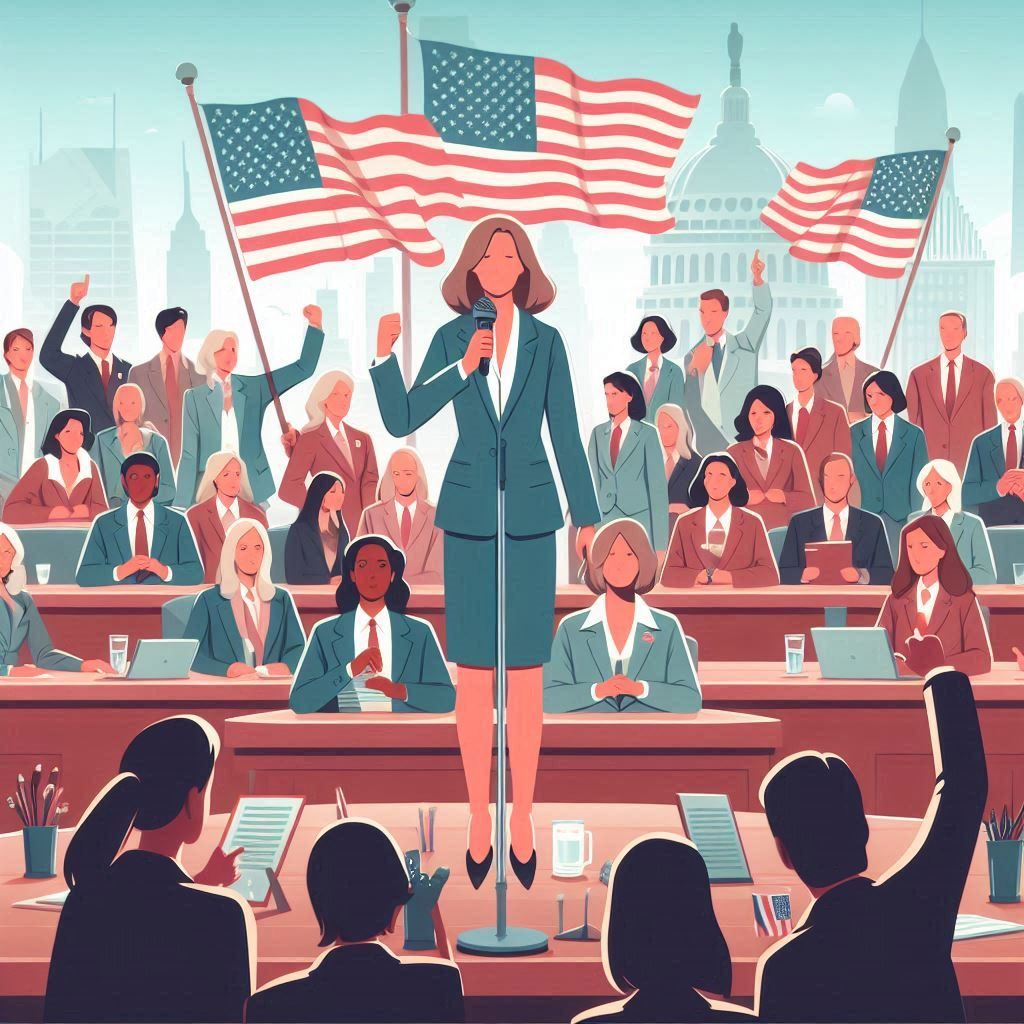Women in Politics: American Women’s Leadership and Political Participation
Women’s political participation has long been a topic of debate and progress. While the world has seen tremendous strides in gender equality, much work remains. From breaking down stereotypes to achieving higher representation in parliaments, women have continuously battled challenges in the political arena. But why is women’s presence in politics so crucial? It’s not just about equality but also about bringing diverse perspectives to leadership. This article explores women’s political journey, challenges, achievements, and the path forward.
Historical Overview of Women in Politics
Early Pioneers: The First Women in Leadership Roles
Women’s political history dates back centuries, though their participation was often restricted or informal. Figures like Cleopatra and Queen Elizabeth I wielded significant political power, although they were exceptions in a male-dominated world. The first wave of women entering formal political leadership roles came much later, during the early 20th century. Women like Emmeline Pankhurst, who led the British suffragette movement, fought for women’s right to vote, laying the foundation for broader political engagement.
The Evolution of Women’s Political Representation
As the 20th century progressed, women began to hold more political offices. In 1960, Sirimavo Bandaranaike became the first female prime minister in the world, a groundbreaking moment in global politics. Since then, more women have taken on leadership roles, although the path has been far from easy. Women’s representation in parliaments has slowly increased, but gender parity remains elusive. It’s clear that women’s involvement in politics has evolved, but there’s still a long road ahead.
The Importance of Women in Political Leadership
Diversity in Decision-Making
Why does it matter if women are in leadership positions? Put, diversity leads to better decision-making. When political leaders come from varied backgrounds, they bring different life experiences and perspectives. Women, in particular, can highlight issues often overlooked by their male counterparts, leading to more holistic governance. It’s like having multiple viewpoints on a problem—you’re more likely to develop a solution that benefits everyone.
Representation of Women’s Issues
Women’s participation in politics isn’t just about fairness; it’s about ensuring that policies reflect the needs of all citizens. When women are part of the decision-making process, issues like healthcare, education, and gender equality are more likely to be addressed. Women leaders often champion causes that affect women, families, and communities. They’re instrumental in shaping policies that support reproductive rights, parental leave, and anti-violence legislation.
Barriers to Women’s Participation in Politics
Gender Stereotypes and Societal Expectations
Despite progress, women still face significant barriers to political participation. Gender stereotypes are a major hurdle. Many societies still hold the outdated belief that women are less capable or less suited for leadership roles. This stereotype not only discourages women from pursuing political careers but also influences voters’ perceptions, making it harder for female candidates to gain widespread support.
Structural and Institutional Barriers
Beyond societal expectations, structural barriers limit women’s political engagement. Political systems are often designed to favour men. For instance, many political institutions lack family-friendly policies, making it difficult for women to balance family responsibilities with a demanding political career. Women often have fewer financial resources to run competitive political campaigns, limiting their participation.
The Role of Media in Shaping Public Perceptions
Media plays a critical role in shaping how female politicians are perceived. Unfortunately, women in politics are often subject to more scrutiny and criticism than their male counterparts. The media tends to focus more on a woman’s appearance or personal life than her policies and achievements. This biased representation can discourage women from entering politics and perpetuate harmful stereotypes about their capabilities.
Achievements of Women in Politics
Landmark Political Leaders
Despite these challenges, many women have broken barriers and significantly contributed to global politics. Figures like Angela Merkel, the former Chancellor of Germany, and Ellen Johnson Sirleaf, the first female president of Liberia, have reshaped political landscapes. These leaders achieved political success and inspired countless women to pursue political careers, proving that leadership is not limited by gender.
Advancing Women’s Rights and Social Policies
Women in politics have been at the forefront of advancing women’s rights. Whether it’s pushing for equal pay, reproductive rights, or combating domestic violence, female politicians have played a critical role in driving policies that promote gender equality. Their leadership has made significant progress in maternity leave, healthcare access, and educational opportunities for women and girls.
Women in Global Politics: A Comparative Perspective
Western Democracies and Women in Leadership
In many Western democracies, women’s political representation has grown significantly, although true equality is still a distant goal. Countries like New Zealand and Finland have elected women as heads of state, demonstrating that gender is no longer a barrier to the highest levels of political office in some parts of the world. However, women still face significant challenges in countries like the United States and the United Kingdom, where political structures can change slowly.
Women’s Political Representation in Developing Countries
In developing countries, women’s political representation often faces even greater hurdles due to cultural, economic, and political factors. However, there have been notable exceptions. Rwanda, for example, boasts the highest percentage of women in parliament globally, thanks to progressive gender quota policies. In other regions, women’s political participation is slowly increasing as governments recognize the need for gender-inclusive governance.
Strategies to Increase Women’s Participation in Politics
Promoting Gender Quotas and Political Reform
One effective strategy to increase women’s participation in politics is the implementation of gender quotas. Countries that have introduced voluntary or mandatory quotas have significantly increased female political representation. These quotas ensure that women have a seat at the table and help shift societal perceptions about women’s roles in leadership.
Mentorship and Leadership Development for Women
Mentorship is another critical factor in fostering women’s political participation. By providing young women with mentors who have navigated the political landscape, they gain the confidence and skills to pursue leadership roles. Leadership development programs tailored for women also help them build networks, enhance their skills, and increase their visibility in political circles.
Conclusion.
Women in politics have come a long way, but the journey is far from over. Their contributions have reshaped societies and brought new perspectives to the political arena, yet they still face significant barriers to full participation. Increasing the representation of women in political leadership is not just about achieving gender equality—it’s about ensuring that our leaders reflect the diversity of the people they serve. We can create a more inclusive and equitable political future by breaking down stereotypes, promoting reform, and encouraging the next generation of women leaders.
FAQs
1. Why is it important to have women in political leadership?
Women bring diverse perspectives to leadership, ensuring that policies reflect the needs of all citizens, not just a select few. Their inclusion leads to more comprehensive and inclusive decision-making.
2. What are the main barriers to women’s political participation?
Women face gender stereotypes, structural barriers, and media bias that hinder their participation in politics. These challenges make it harder for women to pursue and succeed in leadership roles.
3. How can we increase women’s participation in politics?
Promoting gender quotas, providing mentorship, and encouraging leadership development programs for women are effective strategies to increase their political representation.
4. What achievements have women in politics made?
Women in politics have been instrumental in advancing gender equality, driving policies on equal pay, reproductive rights, and healthcare, and breaking down barriers to leadership.
5. Are women well-represented in global politics?
While progress has been made in many countries, true gender parity is still a distant goal. Some regions, like Rwanda, have made significant strides, while others lag due to cultural, economic, and institutional barriers.


